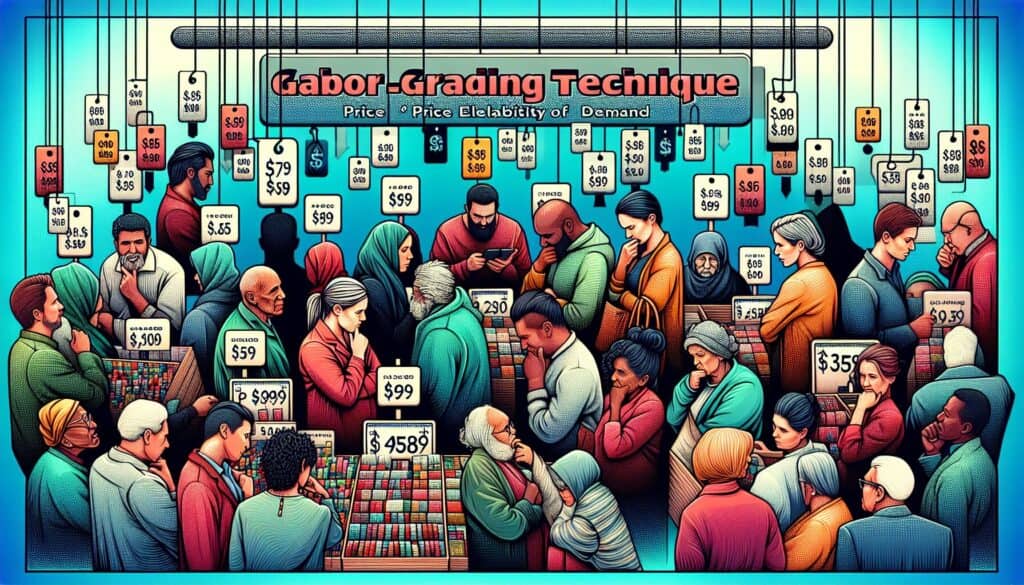To determine the price elasticity of demand for a product by asking potential customers their likelihood of purchasing at different price points.
- Methodologies: Customers & Marketing, Ideation, Product Design
Gabor-Granger Pricing Technique

Gabor-Granger Pricing Technique
- Customer Experience, Market Research, Product Management, Product Pricing
Objective:
How it’s used:
- Respondents are shown a product and asked if they would buy it at a specific price. If yes, the price is raised; if no, it's lowered (or a random series of prices is presented). This continues for several price points to create a demand curve.
Pros
- Directly measures willingness to buy at specific prices, helps estimate revenue and profit potential at different price levels, relatively straightforward to implement in surveys.
Cons
- Hypothetical purchase intent may not reflect actual buying behavior, doesn't explicitly account for competitor actions or product alternatives in the questioning.
Categories:
- Customers & Marketing, Economics
Best for:
- Estimating demand and potential revenue for a product at various specific price points.
The Gabor-Granger Pricing Technique is particularly effective in various stages of product development and marketing strategies across several industries including consumer goods, technology, and pharmaceuticals. This methodology can be especially beneficial during the product ideation and prototype testing phases, where understanding customer sentiment towards pricing can lead to informed design and marketing decisions. Key participants in this technique typically include product managers, market researchers, and pricing strategists, who together analyze customer responses to shape pricing strategies that align with perceived value. For instance, in the technology sector, companies launching new devices can employ this method to gauge how potential customers respond to different price points, allowing them to optimize pricing strategies right before launch. The healthcare industry often employs this technique in market research for new drugs or medical devices, where it is critical to understand pricing dynamics to ensure market access and reimbursement. The simplicity of this method allows organizations to gather quantifiable data efficiently through surveys and online platforms, which can be rapidly analyzed to generate demand curves, thus providing actionable insights that can adapt to different segments and preferences. By incorporating demographic factors or psychographic profiles, firms can segment responses, allowing for targeted pricing strategies that cater specifically to identified consumer bases, enhancing revenue potential while also refining product offerings based on real market data. This adaptability makes the Gabor-Granger approach a versatile tool for organizations navigating multiple market uncertainties.
Key steps of this methodology
- Show respondents a product along with an initial price point.
- Ask respondents if they would purchase the product at that price.
- If yes, increase the price in the next iteration; if no, decrease the price.
- Repeat this process for a series of price points to map demand.
- Analyze the responses to construct a demand curve based on willingness to buy.
Pro Tips
- Conduct sensitivity analysis to understand how variations in pricing affect demand elasticity, refining your price ranges accordingly.
- Incorporate psychographic factors into your survey design to capture deeper motivations and psychological pricing thresholds of different segments.
- Iterate on the pricing experiments by utilizing A/B testing methodologies to identify the most effective price points in real-time settings.
To read and compare several methodologies, we recommend the
> Extensive Methodologies Repository <
together with the 400+ other methodologies.
Your comments on this methodology or additional info are welcome on the comment section below ↓ , so as any engineering-related ideas or links.
Historical Context
1960
1980
1983
1990
1995
2000
2010
1950
1980
1980
1986
1994
1995
2000
(if date is unknown or not relevant, e.g. "fluid mechanics", a rounded estimation of its notable emergence is provided)














Related Posts
Musculoskeletal Discomfort Questionnaires
Multivariate Testing (MVT)
Multiple Regression Analysis
Motion Capture Systems
MoSCoW Method
Mood’s Median Test